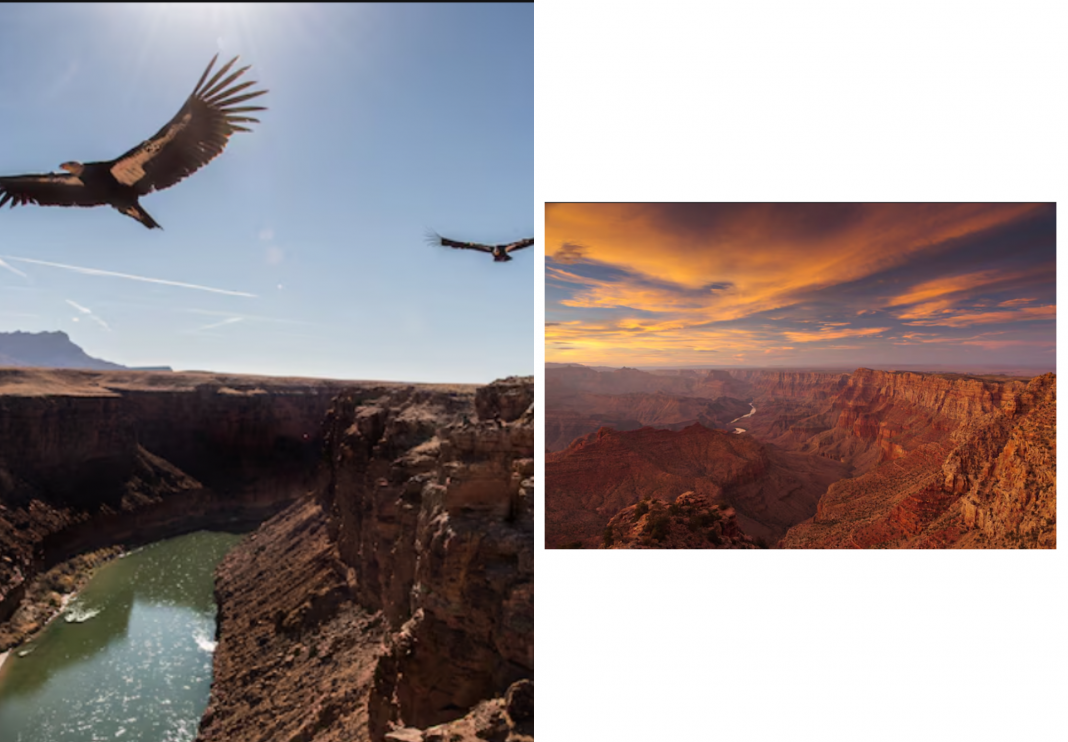For centuries, the Grand Canyon has stood as a monumental testament to the relentless power of nature and the passage of time. Carved by the mighty Colorado River over millions of years, this geological wonder is a place of profound beauty, with its vast expanse of layered rock revealing a vibrant history of the Earth. A visit to the Grand Canyon is more than a simple sightseeing trip; it is an immersive experience that humbles the human spirit and inspires a sense of awe. From the sun-drenched trails of the South Rim to the tranquil wilderness of the North Rim, the park offers a diverse array of experiences for every type of traveler. It is a sacred place that has captivated artists, explorers, and pilgrims for generations, and it continues to inspire a deep connection to the natural world.
A Geological Masterpiece
The Grand Canyon is not just a hole in the ground; it is a living history book, with each layer of rock telling a story of a different geological era. The canyon’s incredible depth and scale are a result of the Colorado River’s relentless erosion, which has been cutting through the layers of rock for an estimated six million years. The oldest rocks at the bottom of the canyon, known as the Vishnu Schist, are a staggering 1.75 billion years old, offering a glimpse into the Earth’s early history.

The canyon’s famous red, orange, and purple hues are a result of minerals in the rock that have been exposed to the elements over millennia. The different layers, from the Coconino Sandstone to the Hermit Shale, represent a journey through time, from ancient oceans to vast deserts. The sheer scale and complexity of the canyon are a testament to the fact that the most profound beauty can be found in the raw, unfiltered power of nature.
The Dueling Rims: South vs. North
The Grand Canyon is divided into two main visitor areas: the South Rim and the North Rim, each offering a distinct experience. The South Rim is the most popular and accessible part of the park, with a wide range of amenities, including hotels, restaurants, and a shuttle bus system. It offers the most iconic and expansive views of the canyon, and its proximity to major cities makes it a common first stop for visitors. However, its popularity also means it can be crowded, especially during peak season.

In contrast, the North Rim is a quieter, more remote part of the park. Located a thousand feet higher than the South Rim, it offers a different perspective on the canyon, with a more forested and lush landscape. The North Rim is only open seasonally due to heavy snowfall and is much less developed, offering a more rustic and peaceful experience for those seeking solitude. The two rims are a ten-mile straight-line distance apart, but a five-hour drive by car, a testament to the canyon’s immense scale.
A World of Adventure and Exploration

The Grand Canyon is a hiker’s paradise, with a wide range of trails that cater to all skill levels. The most famous trails, the Bright Angel Trail and the South Kaibab Trail, descend from the South Rim to the bottom of the canyon, offering an unforgettable but challenging journey. For those who are not prepared for a full descent, there are countless shorter trails along the rim that offer stunning views and a taste of the canyon’s majesty.

Beyond hiking, the Grand Canyon offers a variety of other adventures. River rafting on the Colorado River is a popular way to experience the canyon from a different perspective, offering a thrilling ride through the rapids and a close-up view of the canyon’s towering walls. Mule rides, helicopter tours, and scenic drives are also popular ways to explore the park. No matter how you choose to experience the Grand Canyon, you will be left with a profound sense of awe and wonder.
A Call to Protect a Natural Wonder

The Grand Canyon is not just a tourist destination; it is a sacred place that has been a home for indigenous tribes for centuries. It is also a place that is facing numerous threats, including climate change, light pollution, and the impact of tourism. The National Park Service and various conservation organizations are working tirelessly to protect the canyon’s delicate ecosystem and its cultural heritage.
The Grand Canyon’s sheer beauty and scale are a powerful reminder of the importance of conservation. It is a place that challenges our perspective and inspires us to become better stewards of the natural world. A visit here is a call to action, a powerful and humbling experience that reminds us of our responsibility to protect our planet’s most precious and irreplaceable treasures.



